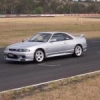Rb27/ Rb28 Vs Staying Rb26
Announcements
-
Similar Content
-
Latest Posts
-
This lady loved her FD for 25 years! https://www.topspeed.com/80-year-old-woman-donates-fd-rx-7-mazda/ My brother in law. He's nice enough to let me drive it whenever. He'll likely not see this, but I'll try: @r-is-for-fun got any pics?
-
Just something I found searching for more info on Emotion R, apparently the ECR33 Skyline GTS25t was either originally black, or there were two of them, the black one being the original demo car, then building a white one which was part of the 1997-onwards (to at least 2008!) Cockpit Tatebayashi Tokyo Auto Salon booth demo cars. It appears that Emotion R closed down in 2008 and was declared bankrupt in 2010: http://bank-db.com/hasan/208365. Scan of a magazine with the black R33 from 1996: Wayback machine archived page from May, 2000: https://web.archive.org/web/20000529061027/http://www.emotion-r.co.jp/skyline.html Option magazine with a few photos from the Cockpit Tatebayashi booth at the Auto Salon from various years: 2002: http://www.jdm-option.com/photo/index.php?action=item&category_id=154&image_id=3507 2003: http://www.jdm-option.com/photo/index.php?action=item&category_id=137&image_id=3033 2005: http://www.jdm-option.com/photo/index.php?action=item&category_id=116&image_id=1831 In 2008 Cusco website mentions that the Cockpit Tatebayashi ECR33 was displayed at that year's Tokyo Auto Salon: https://www.cusco.co.jp/event/2008/12/post_735.html As of 2021 it appears that the ECR33 demo car ended up being exported to Florida, USA: https://rmcmiami.com/inventory/1996-nissan-skyline-r33-cockpit-tatebayashi-demo-car-big-te06-turbo-endless-brakes-lsd-450hp/ And finally here's Google streetview of the Emorion R garage in 2023 which is amazingly not only still there, but the showroom is still full of various parts in stock and funishings, etc.: https://maps.app.goo.gl/ttyEAZdZLyzermyT9 Apologies for nerding out a bit. I used to love doing this 20 years ago on SAU and got a bit nostalgic for a moment... 😅
-
Try fabricating something like this and install it under the pedals? Not sure if it's legal or not....
-
Even though I have some pretty good (brand) ratchet ringies, I avoid using them to break open tight bolts. A broken ratchet is very annoying.
-
I just use a stubby ratcheting ring spanner
-






Recommended Posts
Create an account or sign in to comment
You need to be a member in order to leave a comment
Create an account
Sign up for a new account in our community. It's easy!
Register a new accountSign in
Already have an account? Sign in here.
Sign In Now